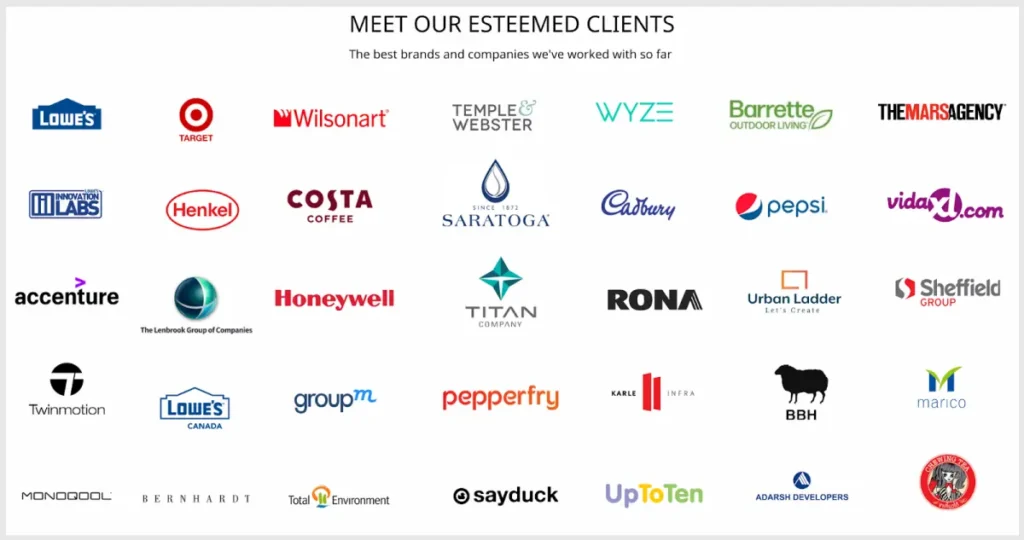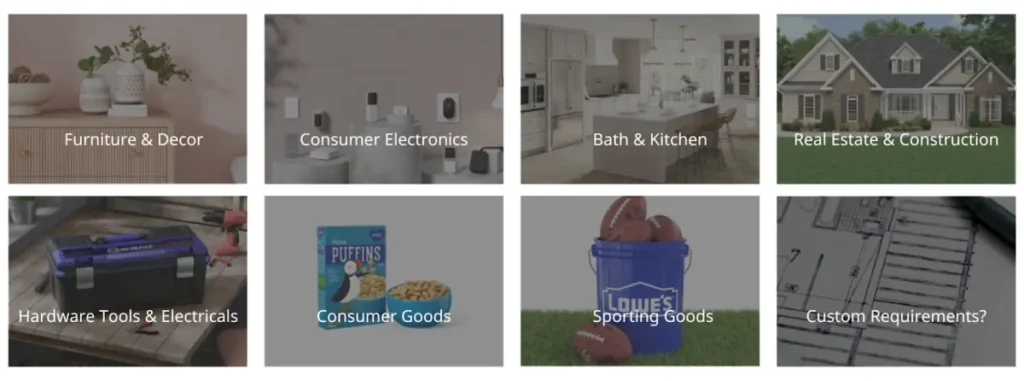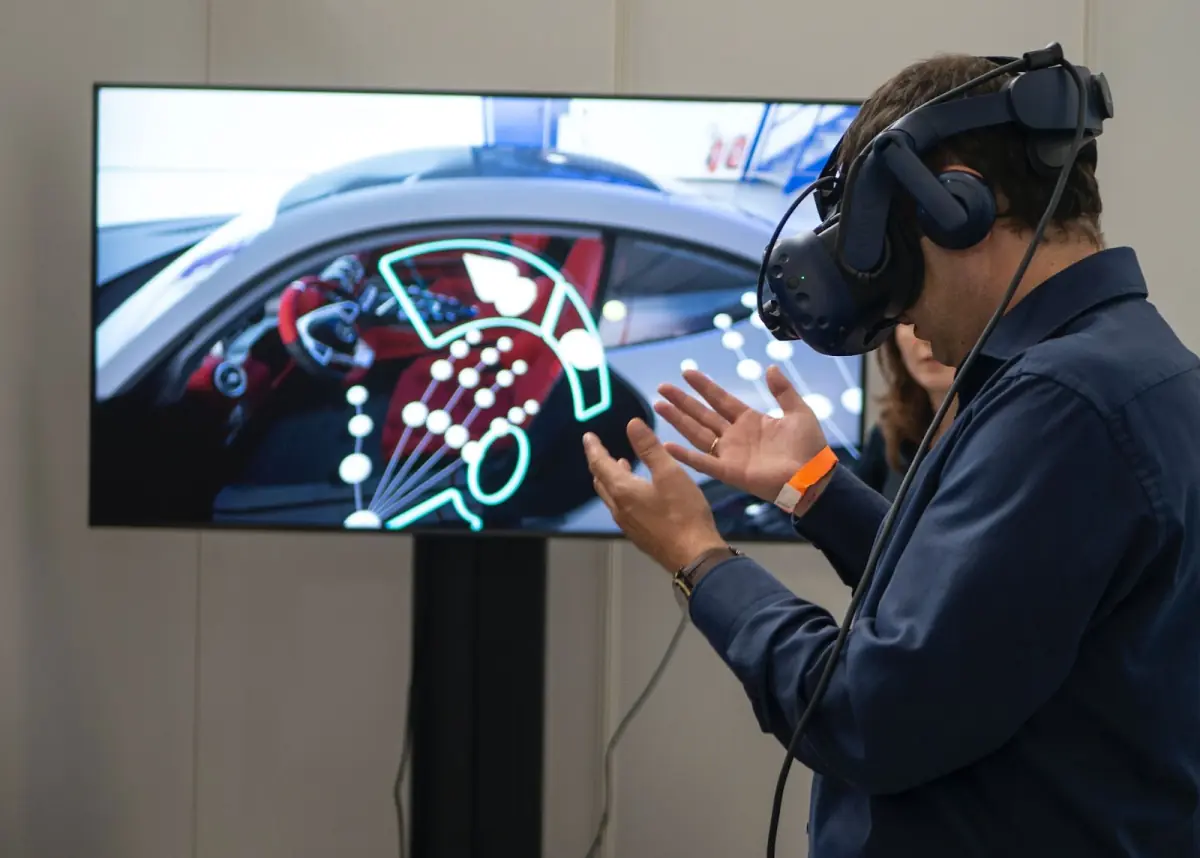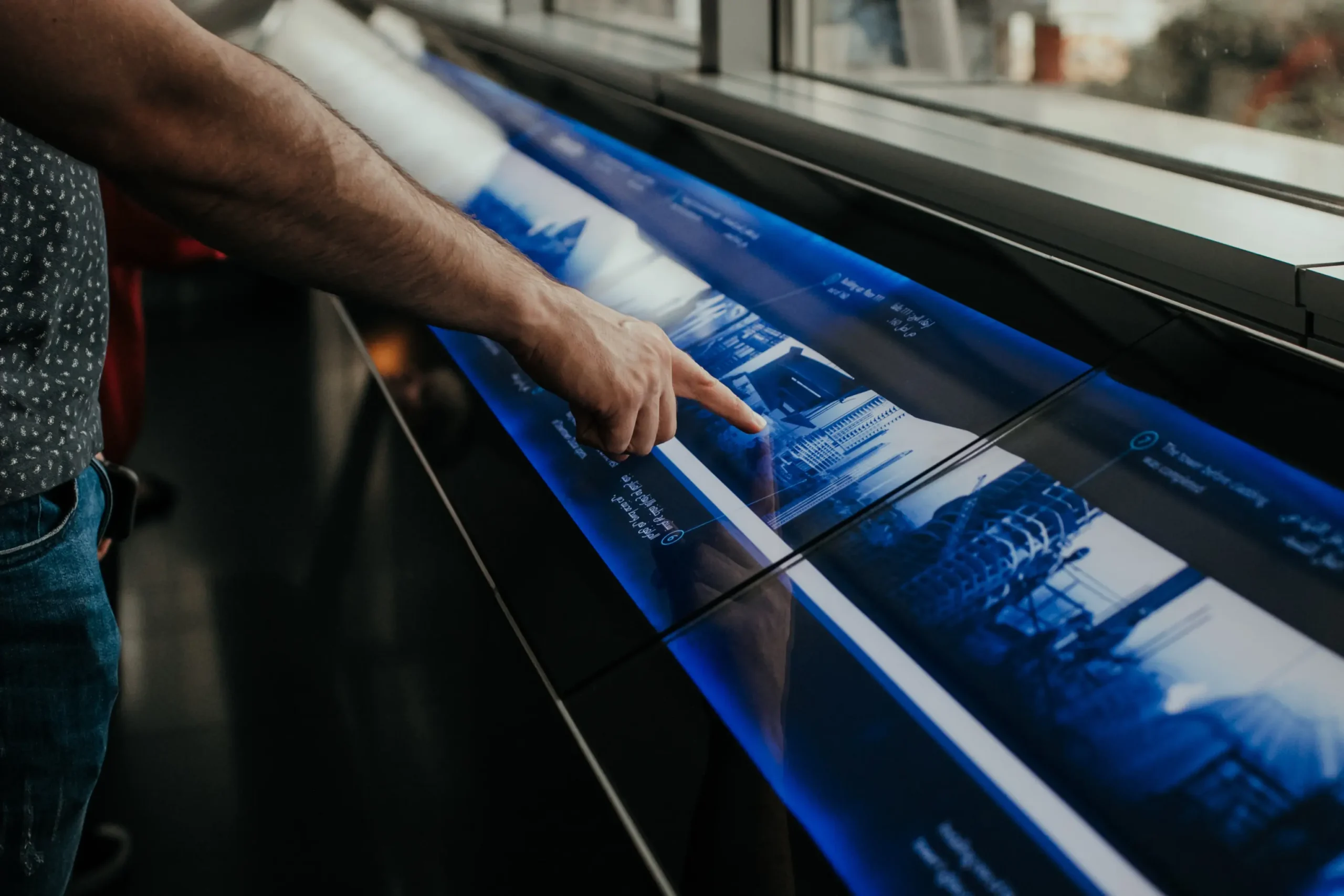What do Lowe’s, Target, Honeywell, and Pepperfry have in common?
The answer is their reliance on the impressive CGI technology to source product visuals that breathe life into their pivotal marketing and advertising images and videos.
CGI is a cost-effective way to add versatility to your product visual and brand by allowing customers to visualize the products in a realistic way.
Computer generated Imagery, or CGI, commonly referred to, is the technique of using computer software to create still or animated visual content such as characters, scenes, background, special effects, animated movies, and more in video games, movies, and TV shows. It can be static or involve movement, and 2D or 3D.
Also known as 3D imaging or 3D rendering, CGI can create flat shapes and complex visual content with different light sources, reflecting particles, and realistic physics.
In this blog, we will talk about the basics of CGI, covering- the difference between CGI and VFX, how CGI works, and how marketers and online sellers can use CGI to their advantage.
What Is The Difference Between CGI & VFX?
Now that we have the definition clear think about how often you have come across people interchangeably using VFX or animation for CGI.
Have difficulty recalling the number of times someone said that Toy Story has such a great animation? It is not animation but CGI. Similar is the case with VFX, which often gets confused with CGI, despite CGI being a part of VFX and not vice versa.
Let’s break down the differences so that we have a clear understanding of CGI, VFX, and animation.
CGI and VFX describe various aspects of digital image creation and manipulation in the film and television industry. The reason why the line between CGI and VFX is considered blurry is that these techniques are often used in combination with each other.
CGI involves creating digital images or animations in which animators or artists produce 2D graphics or intricate 3D environments. Special effects or visualization, otherwise difficult to develop through physical sets, use CGI.
VFX is a broader term that encompasses visual content created with CGI. It uses digital tools like compositing, rotoscoping, and color grading to manipulate real-world footage.
CGI is a subset of VFX, while VFX comprises all the techniques and technologies used to create visual effects.
Let us look at some examples to better differentiate between CGI and VFX:
- Jurassic Park: One of the most groundbreaking examples of CGI, the 1993 version of this infamous movie uses CGI to create hyper-realistic dinosaurs. However, it is essential to note that the movie also used animatronics and practical effects to demonstrate the difference between CGI and VFX.
- The Avengers: We all remember the iconic battle scene between superheroes and the invading armies of aliens in the 2012 installment, but not many of us know that the production team used VFX to enhance the live-action footage to give off an illusion of superpowers and destruction in the battle.
Certain movies in the past have shown remarkable incorporation of CGI and VFX, like Life of Pi and Interstellar. Life of Pi revolves around the incredible chemistry between the protagonist, the tiger, and the ocean. While the tiger was created using CGI, digital elements with the live-action footage were integrated using VFX.
In Interstellar, the black hole simulation was created with computer-generated Imagery. In contrast, the space-time distortion, which showed the warping of space-time around the black hole, was done with visual effects.
What Is The Difference Between CGI & Animation?
Often used interchangeably, CGI and animation are two different aspects of the production process. CGI uses computer software to create visual elements, ranging from 3D models and special effects to visual effects.
It includes both static as well as moving images. While it can be used to create life-like images, it can also be combined with live-action footage to produce hyper-realistic and immersive visual content.
On the other hand, the animation creates an illusion of movement. It involves simulating motion by rapidly changing the sequences of the images that minimally differ from each other. Various techniques are used to create animation- hand-drawn, slow-motion, and computer-generated animation.
These examples will help you better understand the difference between CGI and animation:
- Toy Story: Toy Story is a classic example of CGI since the entire movie was created using computer-generated imagery- the characters, environment, and movie subjects were all created using digital software.
- The Lion King: The 1994 superhit version of The Lion King is an example of animation wherein the images were drawn by hand and then animated frame by frame, giving it an illusion of movement.
If you are wondering why we left poignant movies like Avatar and Finding Nemo out of the list, then that’s because of both of these integrated animations and CGI. The characters and environment were created using CGI, while the movement and facial expressions were done through motion capture technology or traditional animated techniques.
How Does CGI Work?
Those mentioned above are just a few examples of identifying and understanding the differences between CGI, VFX, and CGI and animation. Now that we know about it, let us figure out how CGI works.
CGI involves creating 3D models of objects, scenes, and characters and rendering them into 2D images or videos. The artists or designers begin the process by creating 3D models using specialized software.
Texture and material are added to give the model a realistic appearance. Designers and artists add and adjust the lighting to create shadows and highlights. The output is then rendered to produce the final 2D image or visual content.
Before discussing how CGI is created, it is important to understand the different departments and entities involved in materializing CGI. This will help us go into details of the CGI work process.
- Art: The art department plays a vital role in CGI production. Their objective is to create a cohesive and visually stunning final product that aligns with the business’s goal and engages the audience.
- Pre-viz: As the word suggests, it is the process of visualizing a concept and trying different approaches for a scene or a sequence to make an informed, creative, and technical decision. The main objective of pre-viz is to visualize the concept, plan the camera movements, and identify and resolve technical challenges.
- Asset department: It lays the foundation for creating hyper-realistic and high-quality CGI visual content. From asset creation, management, and optimization to integration, the asset department is responsible for ensuring accuracy and maintaining quality in the digital assets to get desired output.
- Animation: Any movement or performance in visual content is the responsibility of an animator, regardless of how big or small it is.
- FX simulation: FX simulation is done to create realistic effects that can seamlessly blend with live-action footage or any computer-generated environment. It involves using software to generate simulations of various phenomena like fire, smoke, destruction, and more.
- Lighting; In the case of composite scenes, it is essential to match the scene’s lighting with the digital elements. This technique involves creating virtual light sources that mirror the environment’s lighting so they can seamlessly mix into the same.
- Matt Paint: It is a technique wherein 2D images of the landscape or the environment are created to create a new environment that exists in real life or modify the existing sets.
- Rotoscoping: It is a process used to create special effects or add CGI to the elements in live-action footage. The animators create a realistic movements of characters and simulate the original movements of real-life footage by tracing over live-action footage frame by frame.
- Compositing: It is the process that involves combining various visual elements like 3D models, live-action footage, and special effects to form a final image or a video sequence. Different elements are blended by layering on top of one another to create a cohesive and seamless final image. Compositing is essential to the CGI pipeline, used extensively in producing movies, video games, TV shows, and movies. With compositing, filmmakers and artists can create complex and realistic visual effects which would be otherwise difficult to achieve through traditional filmmaking processes.
CGI Can Be Created Using The Following Methods
- Algorithm– An algorithm can be used to create various fractal patterns. Fractal patterns are a series of patterns that repeats over and over again. Take, for example- river deltas, tree branches, coastlines, or lightning bolts. To create fractal patterns, designers use an algorithm that generates mathematical equations to create repetitive patterns.
- 2D pixel-based image editor– To give users the freedom to edit and manipulate the visual content, designers or artists use a 2D pixel-based image editor. These editors divide the content of an image or video into pixels, which can be individually edited or manipulated.
- 3D graphic software– 3D graphic software is used to create 3D models and animation for use in CGI. With this program, designers or artists can create 3D models of various objects, scenes, and environments and add texture or material to give them a photo-realistic appearance.
CGI In Marketing & Online Selling
CGI has widespread applications across video games, architecture, automotive, and aerospace industries. But it is finding most applications for marketers and online sellers looking to attract and engage their target audience. This cost-effective production method enhances visual effects and improves realism, boosting the conversion rate.
Let’s look at how marketers and online sellers can use CGI technology:
- Product visualization for selling online: By using CGI technology, online sellers and marketers can put their eCommerce and social media sites on display in a photo-realistic manner.
- Offer product customization for consumers: Online sellers and markets can use CGI to create real-time interactive product configurators, which the customers can use to change the materials, colors, and textures of products and see how they will align with their desires.
- Offer VR/AR experiences to consumers: Using CGI, online sellers, and marketers can create augmented reality (AR) experiences allowing customers to virtually try on clothes or place the furniture before they plan on purchasing.
- For the creation of videos: Online sellers and marketers can leverage CGI to create various types of videos like commercials, tutorials, and explainer videos to enrich their customer experience.
- For virtual product launches: Online sellers and marketers can use CGI to provide customers with a better understanding of the product. They can use 3D computer graphics to create product images from various angles and directions.
- For creating 3D product images: With CGI technology, online sellers and marketers can create virtual product launches and product demonstrations. When compared to traditional product launches, this will be a relatively cost-effective and accessible method.
Famous Companies Using CGI
Leading brands across the world have been using CGI technology to create engaging, immersive, and interactive customer experiences, which helps them increase customer engagement and boost conversion rates. Let us look at some of those examples:
- Lowe’s: A Fortune 50 home improvement company, Lowe’s offers a virtual reality experience to its customers using CGI technology. Take, for instance, they have created a virtual reality kitchen design tool through which customers can see how well certain furniture, different cabinets, and countertops look in their home.
- Target: An American retail corporation, Target Corporation has always been in the news for creating photo-realistic images and product images that you can find on their eCommerce website. By creating 3D models of the product, they have been offering customers a better view of the product.
- Pepperfry: An Indian online furniture and home decor store, Pepperfry has been leveraging CGI technology to offer augmented reality experiences to its customers. They created an augmented reality app that allows customers to see how furniture will look in their homes before they purchase.
- Titan: An Indian watch manufacturer, Titan has been using CGI technology to create 3D models for their product, and they display their watches from any angle to the customers, thus providing customers with a better view of the watches.
- Honeywell: A global technology company, Honeywell has been long using CGI technology to offer interactive product configurators to customers. Using the configurator, customers can customize different products to see how they will align with their home and existing furnishing.
How Can House Of Blue Beans Help In Your CGI Journey?
HOBB is a done-for-you CGI company that assists businesses /online sellers/marketers in realizing their vision of enhancing their customer reach and boosting their brand identity with CGI product visualization.
We combine the expertise of our artist with state-of-art technology to create an immersive image, video, and other visual content experience for businesses spanning industries – consumer electronics, real estate, furniture, and more.
Take a look at our client base

As a team of experts holding proficiency in creating hyper-realistic visual content through CGI, we have been assisting businesses for over a decade. We take pride in helping leading brands like Lowe’s, Henkel, Cadbury, and more with stunning CGI visual content. Our commitment to excellence has made us the go-to choice for industry-leading businesses looking for stunning visual content.
Aside from filmmaking, CGI offers numerous benefits to businesses across industries. It has become an integral part of helping architecture, aerospace, real estate, product design, product manufacturing, medicine, and more to materialize their vision into life with a hyper-realistic and accurate representation of the product.

Let’s look at some of the CGI benefits spanning industries with House of Blue Beans.
- Hyper-realistic visuals: Product advertisers, marketers, and online sellers can leverage House of Blue Beans state-of-the-art CGI technology to create hyper-realistic product images. This will boost the customer’s engagement rate as well as the conversion rate. The enhanced visual appeal helps customers better understand the product and make a well-informed decision.
- Cost-effective: Unlike the traditional methods of generating visual content, CGI doesn’t require expensive setups or physical equipment installation. Furthermore, since CGI allows for the manipulation of photos, this significantly reduces the money otherwise spent on re-shoots that happen with traditional photography. Once an asset has been created, it can be used multiple times for different purposes. House of Blue Beans uses a reusable CGI pipeline, bringing down the average cost of visual content to ~$600, from $3000 otherwise spent in shipping, staging, and shooting a product through the traditional method.
- Flexibility: A high degree of flexibility is associated with design and composition, which saves a lot of time otherwise spent in traditional visualization techniques. CGI gives designers the freedom to make changes as and when required. Since the changes to the design and composition can be made quickly and easily without re-shooting, it saves a lot of time and money.
- Versatility: CGI is versatile because it can be used to create anything imaginable, be it realistic creatures, fictional worlds, environments, or characters. The level of control that comes with CGI helps create highly detailed and precise visual content that would otherwise be impossible to achieve with traditional effects. CGI does not require expensive sets, makeup, or costumes, making it efficient and cost-effective compared to the conventional method of creating effects. It can help a brand enhance its story and engage a broader audience base by seamlessly integrating with live-action footage.
Our Services include:
- 3D Modeling: Captivate and engage your audience by transforming your ideas and concepts into 3D models, which is used to create different visual contents like images, videos, 360 spins, and more. We secure the services of best-in-class 3D artists and state-of-the-art technology to create precise and intricate 3D models that will accurately represent your product in the virtual world.
- Images: Our 3D experts implement our CGI technology to provide you with visually stunning and accurate images – be it white background images, 360 photography, or lifestyle images. Our goal is to help you bring your vision to life.
- White Background Images: Provide your audience with product images in a distraction-free environment with the House of Blue Beans white background image. Our carefully created white background image will ensure that your audience only focuses on the product.
- 360 Spins: Change how your audience engages with the product with House of Blue Beans. Allow them to explore the product from different angles so that they can make an informed decision, and the possibility of return is also reduced.
- Lifestyle Images: Create captivating lifestyle images that evoke emotions and encourages the target audience to take action and become a loyal customer. Whether fashion, home decor or consumer electronics, House of Blue Beans will help you create compelling and contextual lifestyle images.
- Videos: We will help you offer an immersive video experience to your customers. We take immense pride in pushing the boundaries of creativity and technology to help you deliver stunning 3D videos that leave a lasting impression on your audience.
- Product Videos: Demonstrate your product in its best angle with House of Blue Beans. Showcase the product’s features and functionality in a captivating and immersive way to the audience.
- Functionality Videos: We implement 3D animation to help you offer informative functionality videos to the audience. Showcase how a product functions in an engaging way with House of Blue Beans.
- Inspirational Videos: Evoke emotions in the audience and inspire them to connect to your business with top-notch inspirational videos created by House of Blue Beans.
- How-to Videos: Take your audience on an engaging journey of learning how to use the product with our informative videos. Regardless of how complex the product is, we will help you break it down so that customers understand it easily.
- White Background Videos: Offer clutter-free videos with a plain white backdrop to your audience to focus entirely on your product, its features, functionalities and benefits.
- Social Media Visual Content: Broaden your customer base with our tailored social media visual content. We will customize the visual content to suit your brand’s tone, making it shareable and boosting your online presence.
- Architectural Visualization: Bring your architectural projects to life with our 3D interior and 3D exterior rendering service. Our skilled architectural visualization specialists will use the latest tools and technologies to ensure that the interior and exterior of your property are highlighted with accurate representation and in a detailed manner. Whether it is a commercial or residential project, we offer custom visualization services that will meet your requirements and convey your message to the intended audience.

- AR/VR Experiences: Leave a long-lasting impression by captivating your audience with our immersive AR/VR experiences. Whether showcasing a product, telling a story, or transporting your audience to a different world, we will help you create engaging and memorable experiences. Give customers the freedom to visit your store virtually and shop with 360 shoppable rooms or offer them a visualizer app through which they can see how different colors and patterns look inside their home. We combine our CGI expertise with cutting-edge technology to create 3D models that come to life in AR/VR.
You don’t have to believe what we say. You can see the reviews, which speak for themselves.

So what are you waiting for?
Showcase your product in the best light possible with House of Blue Beans!





